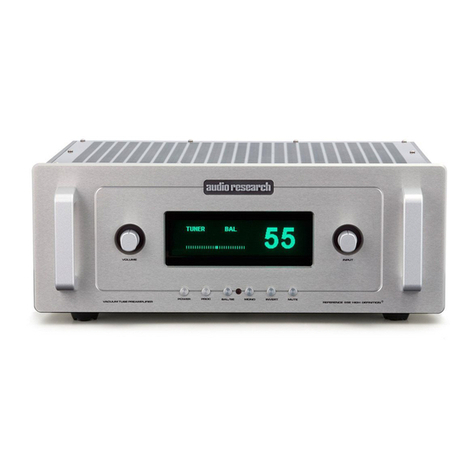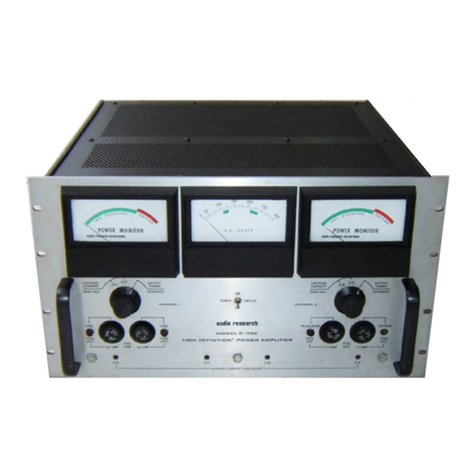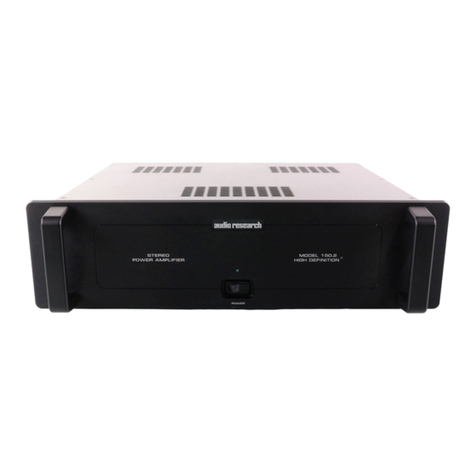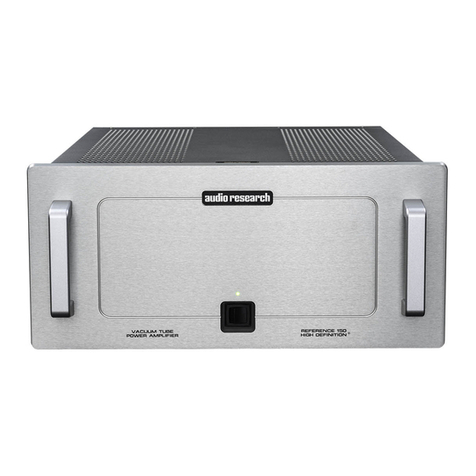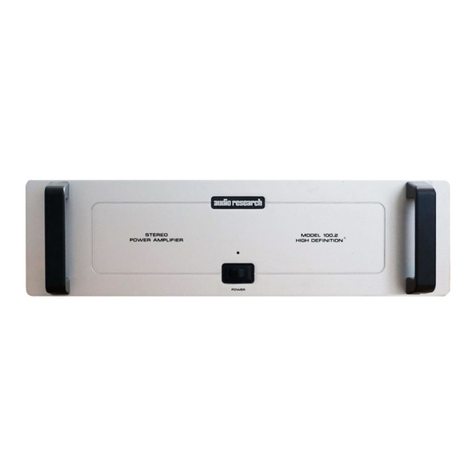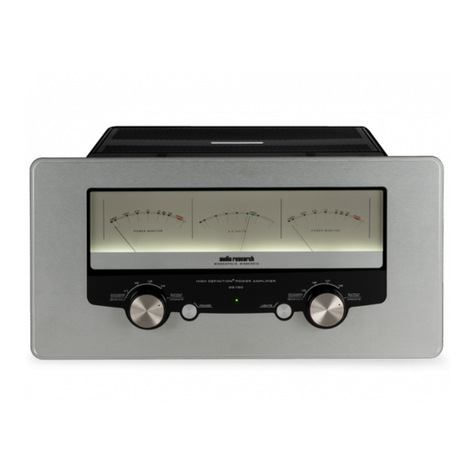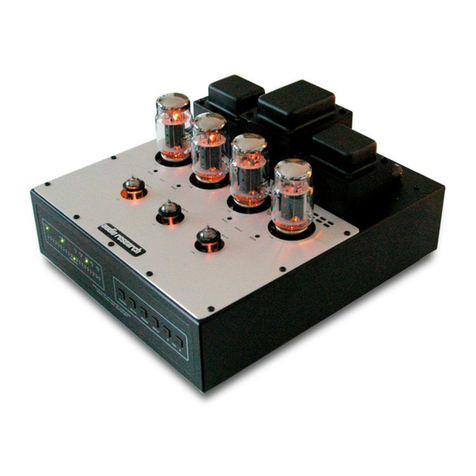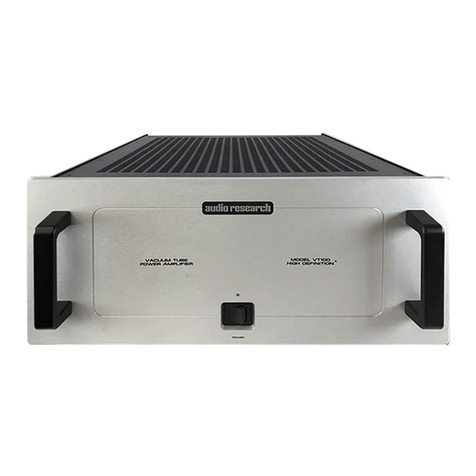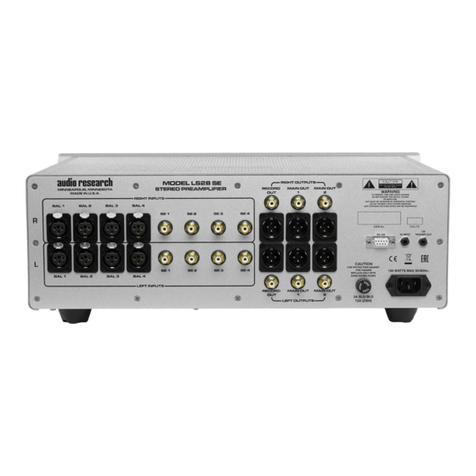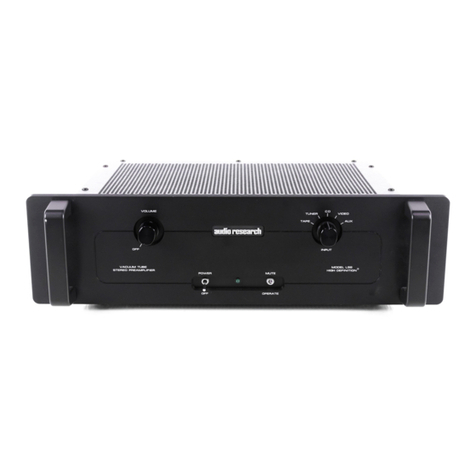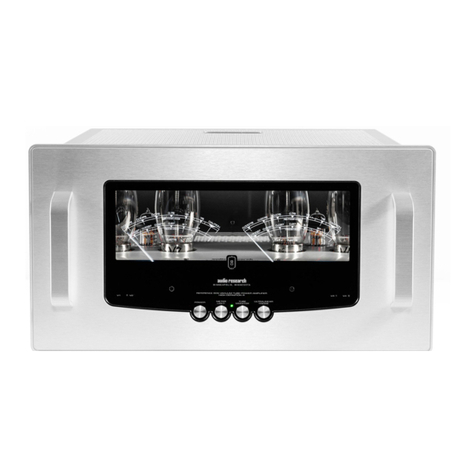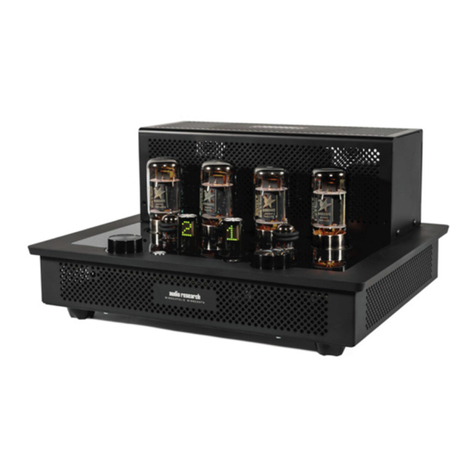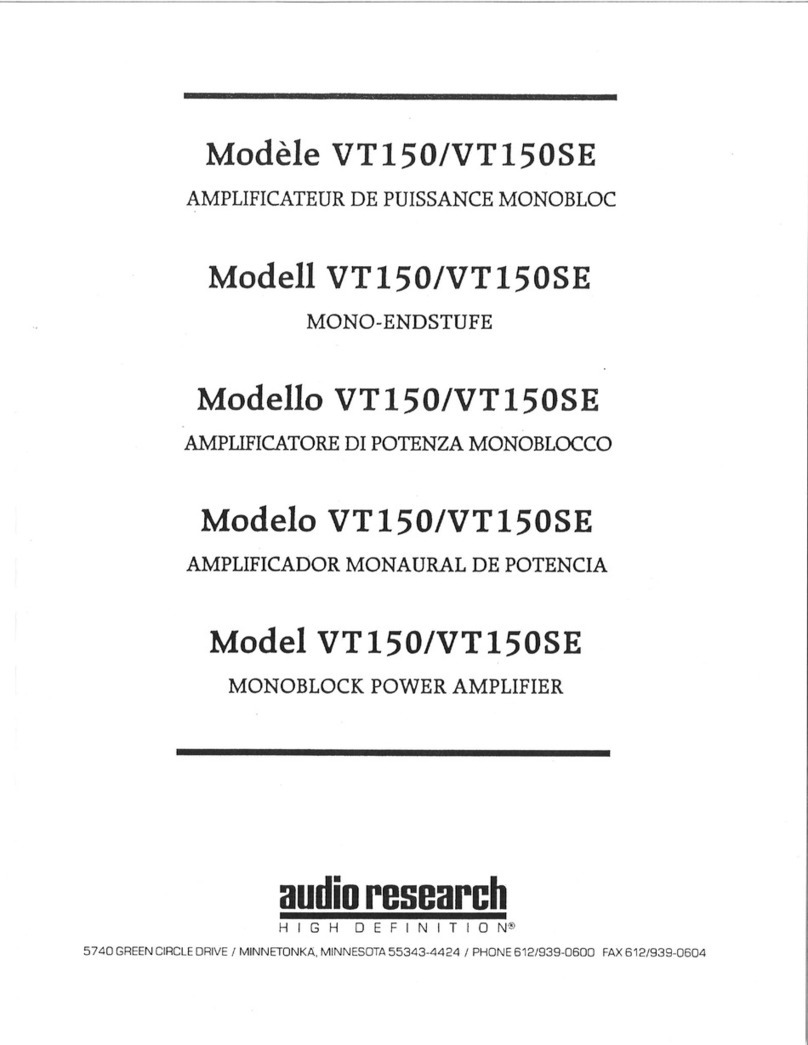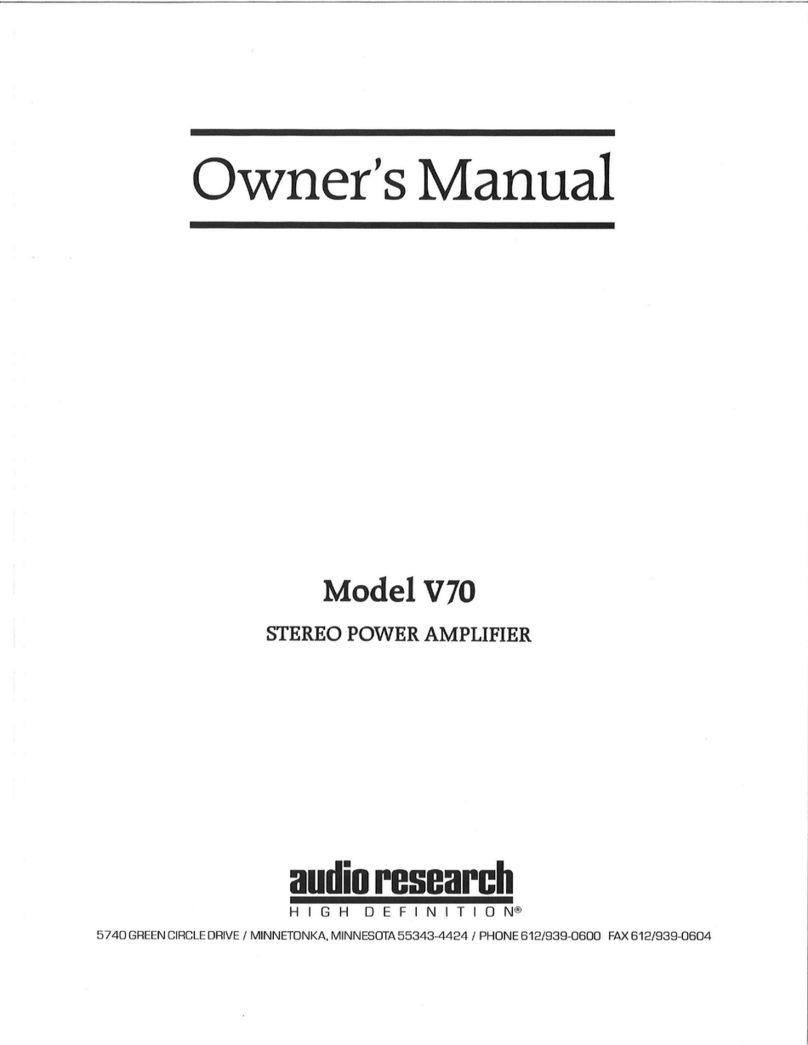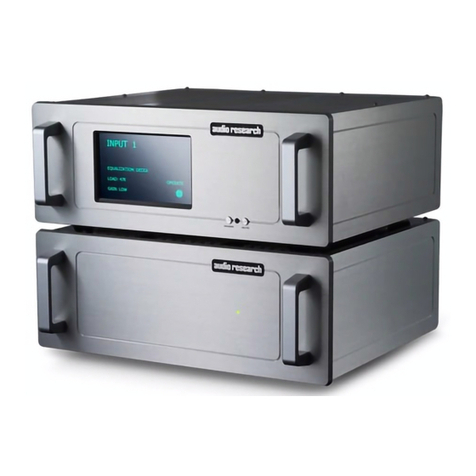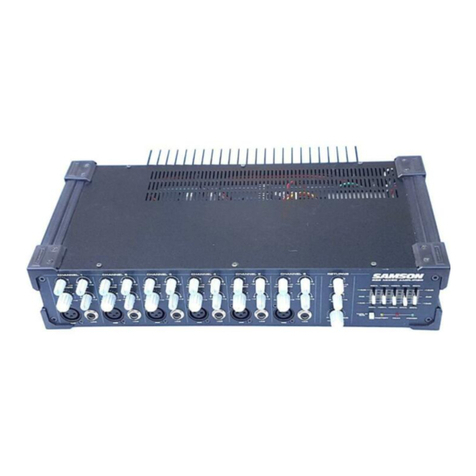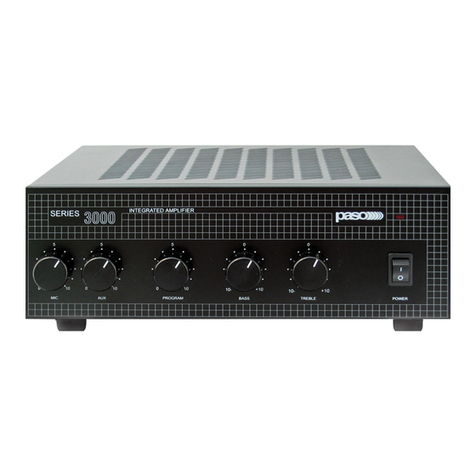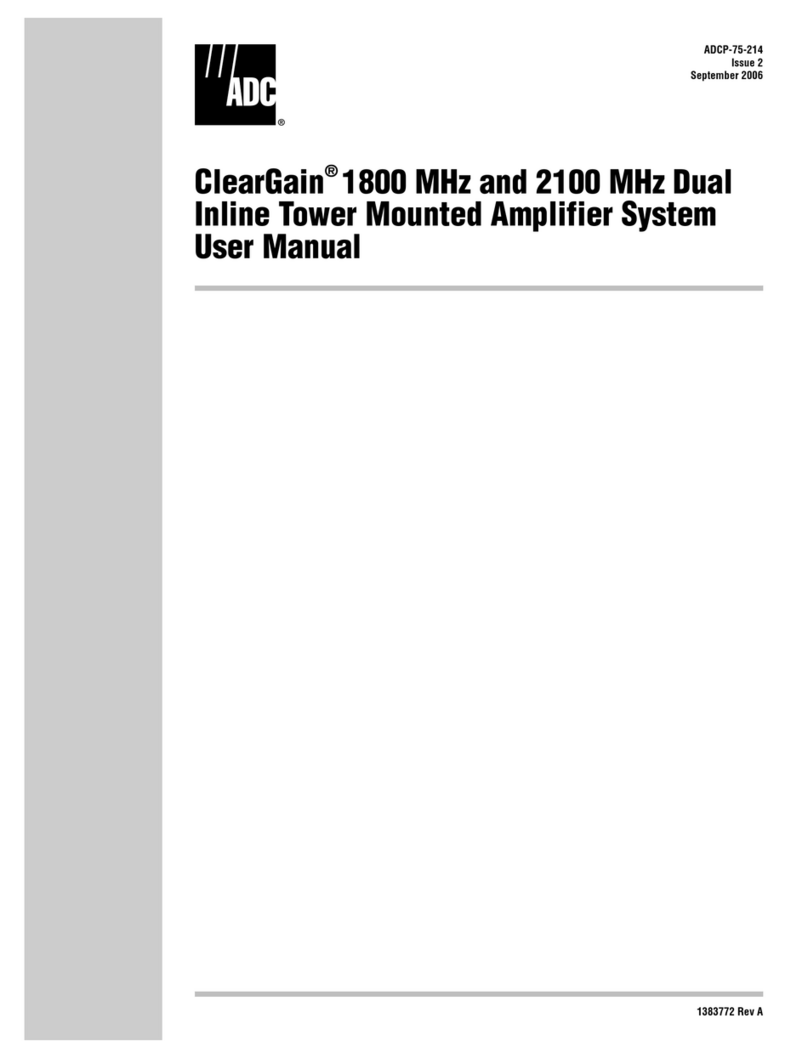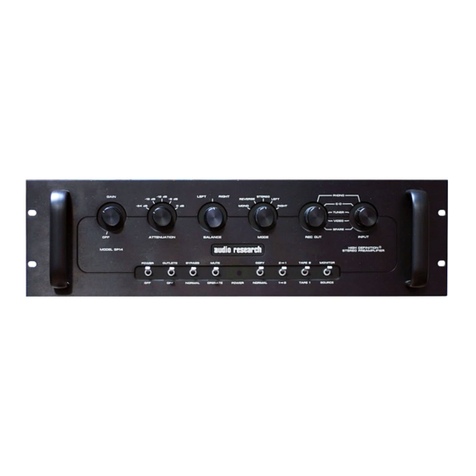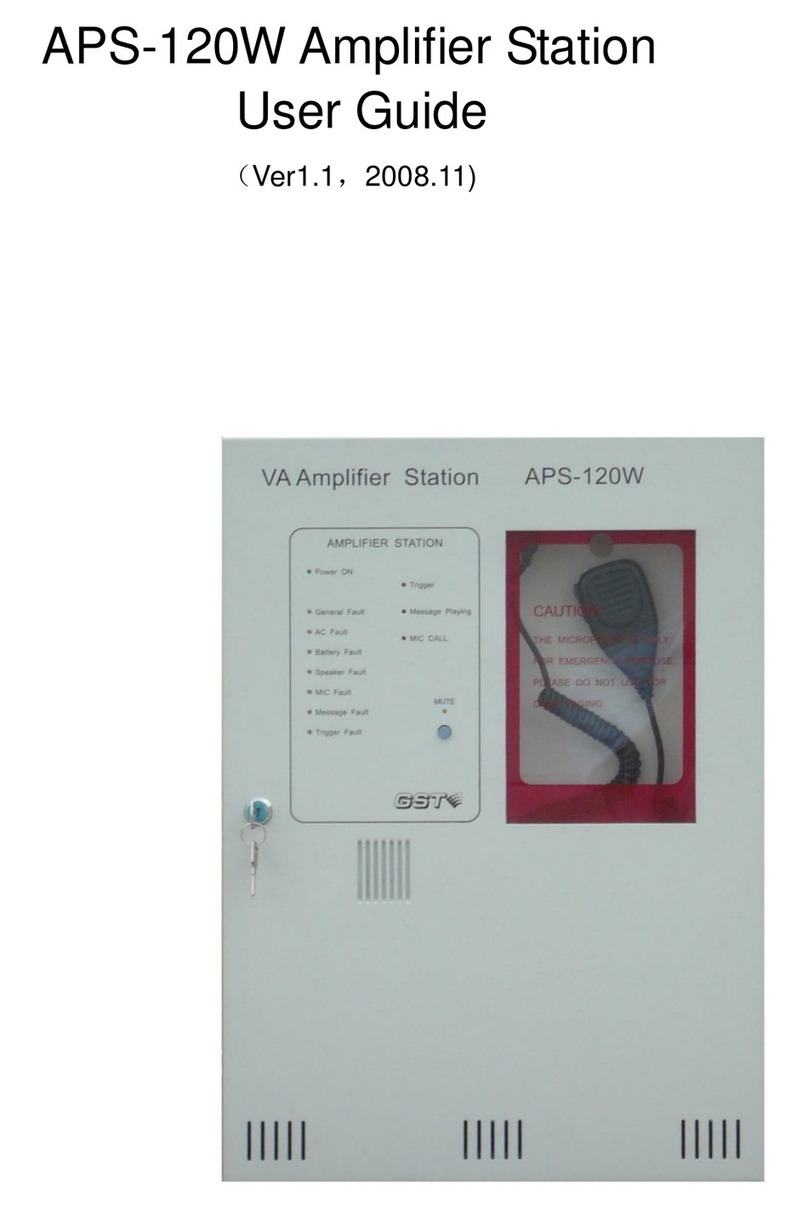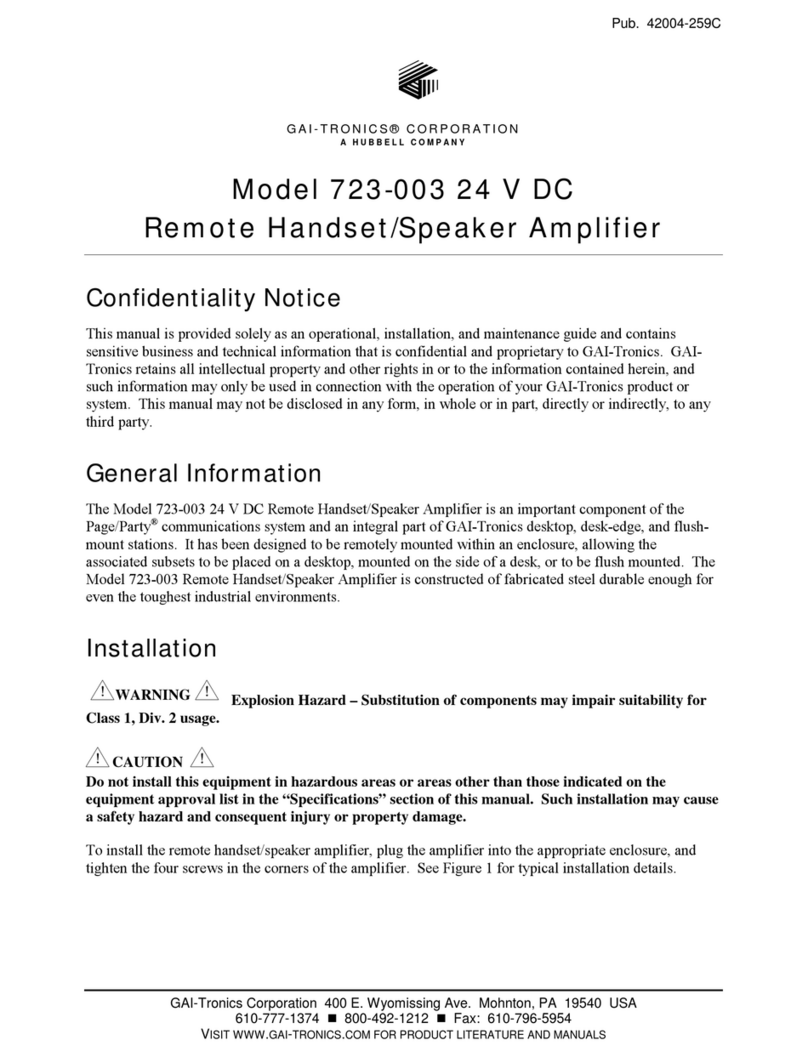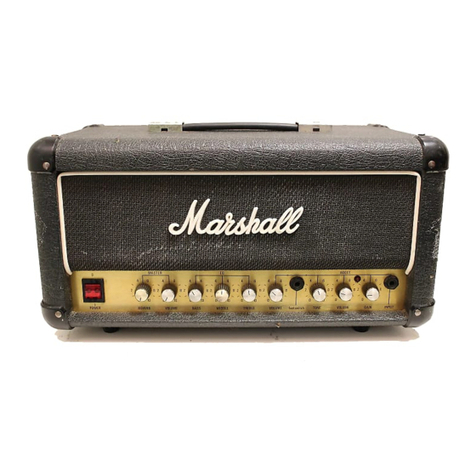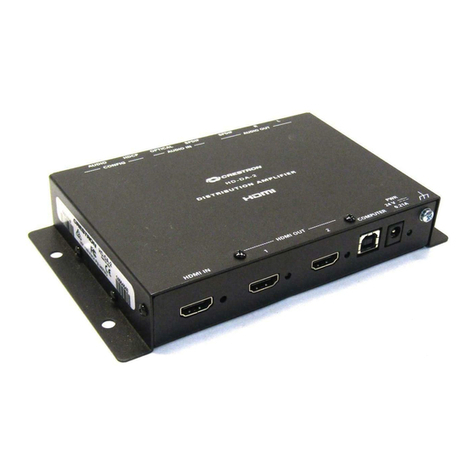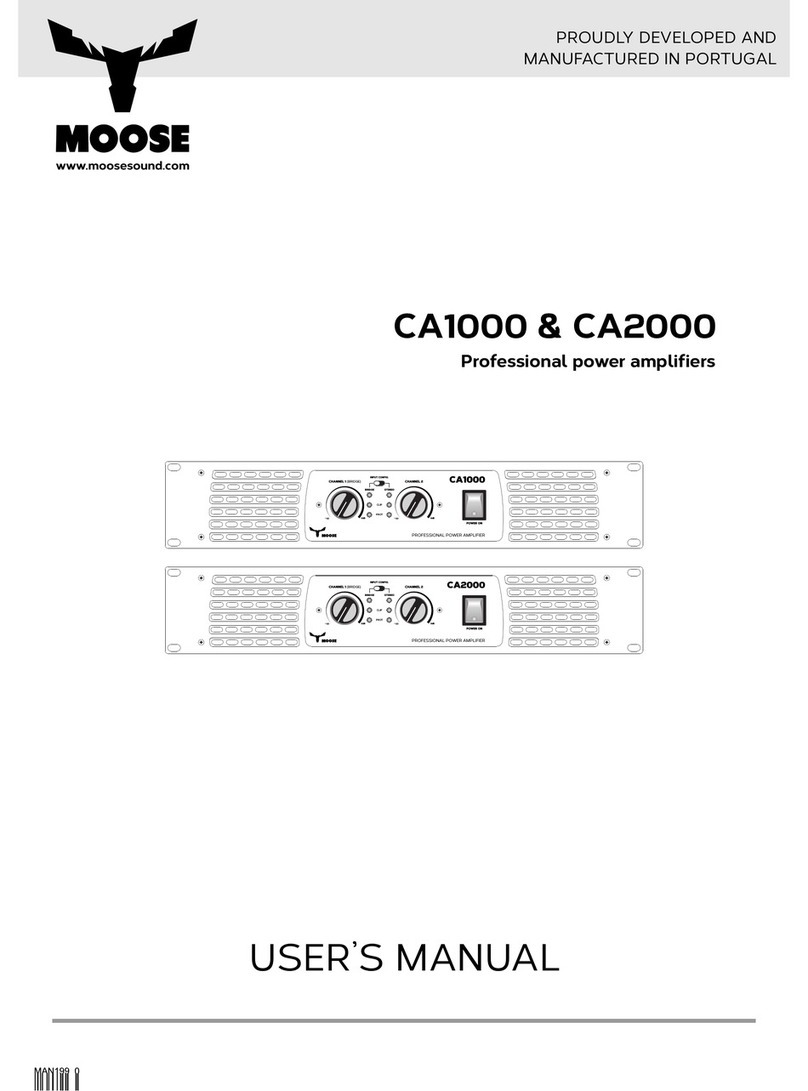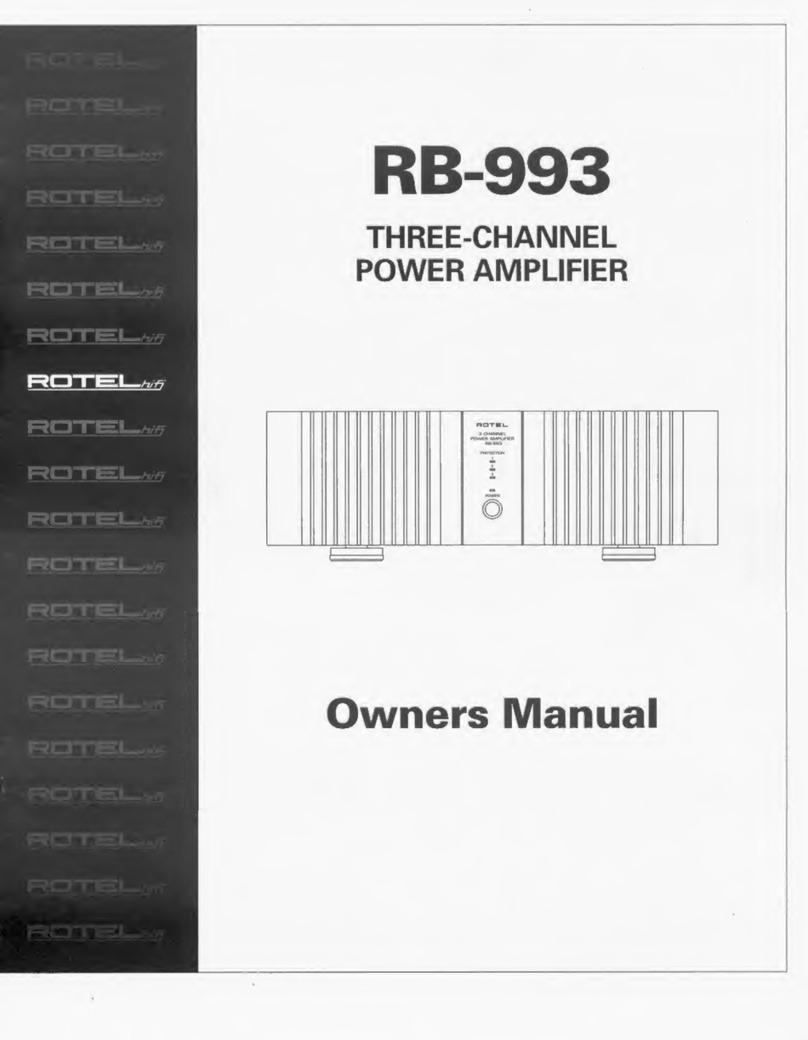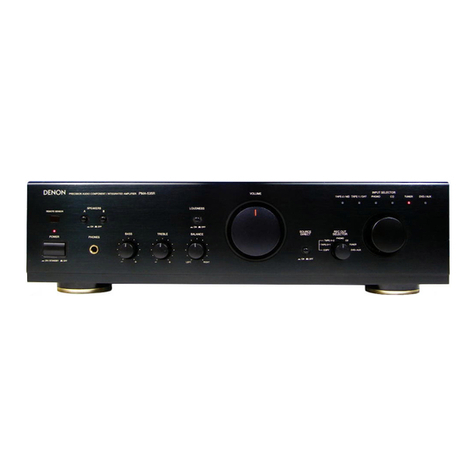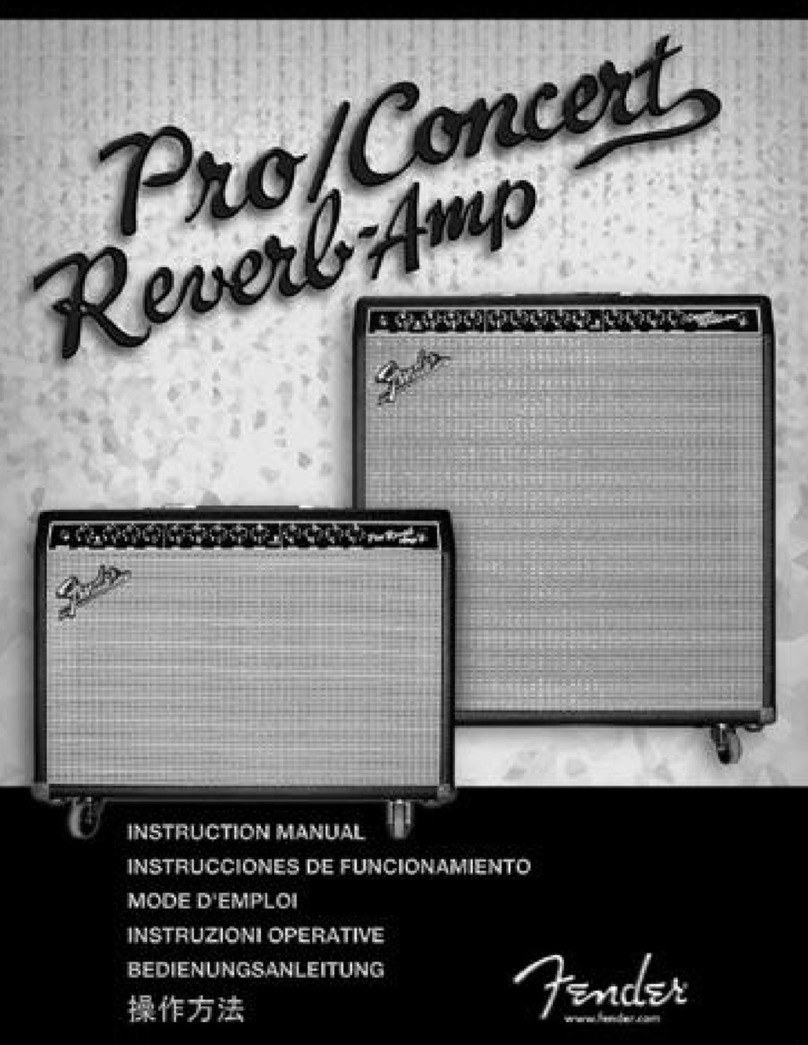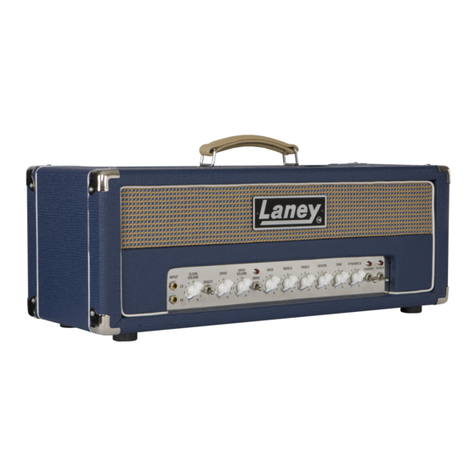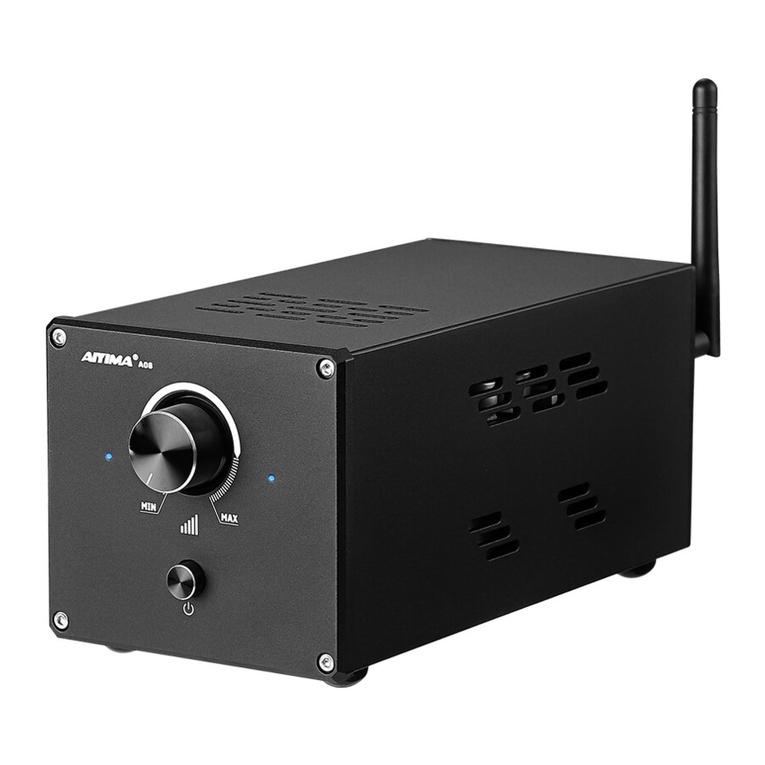
Model
SP9 MKIII
Description
o(
Controls
GAIN
CONTROL:
A high-quality, metal-film seg-
mented control with
31
steps and accurate tracking.
Use
it to control loudness or volume. Rotation to
the
left attenuates gain, rotation
to
the
right increases
gain.
Best
sonic performance and best signal-to-noise
ratio will result
if
the
input
signal
and
amplifier
input sensitivity allow normal listening when
GAIN
is set between
10
o'clock and 2 o'clock.
With some high-efficiency loudspeakers, a high-out-
put
source such as a
CD
player, and with a high-gain
amplifier lacking an input volume control. you may
discover that normal listening is only possible with
the
GAIN
control barely on, or in the 9 o'clock posi-
tion. In such circumstances
it
is possible to reduce
the
overall gain
of
the
SP9
MK.III
by
6dB,
by making
a simp1e
internal
adjustment.
See
the
ADJUST-
MENTS Section
of
this
Manual,
or
contact
your
Audio Research dealer for assistance.
BALANCE
CONTROL:
When rotated, adjusts
the
relative sound levels of
the
left and right channels.
The 12 o'clock position marks the point
of
equal bal-
ance. Rotating
the
knob
to
the
right decreases
the
level
of
the
left channel proportionally, shifting
the
sonic image
to
the right. Rotating
the
knob to the
left shifts the sonic image
to
the
left.
MODE
CONTROL:
Allows selection
of
various sin-
gle-channel {mono) and two-channel {stereo) listen-
ing modes. Detents mark each selection option dur-
ing rotation
of
knob. "Mono• reproduces identical
sonic information in
both
right
and
left channels.
"Reverse" switches left-channel information
to
the
right, right-channel information
to
the
left. "Stereo"
is
the
n.ormally preferred mode for
most
program
material, producing the most realistic spacial image.
"Left•
cancels all right-channel information and pre-
sents left-channel information
to
both channels. In
the
same
way,
"Right"
cancels all left-channel infor-
mation, etc. ·
INPUT
SELECTOR: Detents·mark selection
of
vari-
ous source material options: "Phono• for phonograph
record turntables; "Tuner• for AM/FM radio tuners;
•co•
for compact digital disc players: "Video" for
input from
Beta
or
VHS
videotape recorder/players;
and
"Spare•
fc;ir
any
additional high level source:
tape, tuner,
CD,
video, etc.
The signal source chosen by the Input Selector is fed
to
the
Main
and
Recorder
I/Recorder
2
outputs
2
when the Monitor/Source switch
is
set to "Source."
.(See description
of
Monitor/Source switch,
next
page.) The source chosen by
the
input selector
is
always fed to the Recorder I/Recorder 2 outputs, and
cannot be overridden.
POWER
SWITCH:
Supplies power from
AC
wall out-
let to
SP9
MKIII
when in "Power" position. Although
not strictly necessary, it is nonetheless good practice
to
put
the SP9
MKIII
in "Mute" before turning on
power for maximum protection ofyour power ampli-
fier(s)
and speakers.
MUTE/QPERATE SWITCH:
In
"Mute"
position,
shorts
the
main outputs of the preamplifier
to
allow
listening interruptions for telephone answering or
other reasons. This switch should always be activat-
ed between listening uses or switching of inputs,
in
addition
to
turning
the
Gain
(volume)
control
counter-clockwise. These
two
simple precautions
will prevent inadvertent misuse of your
SP9
MKllI
and help protect your power amplifier(s)
and
speak-
ers from unexpected transient signal pulses (tone
arm mishandling, etc). In "Operate" position, this
switch allows the signal to pass normally to
the
out-
puts.
CAUTION:
Do
not
turn up
the
gain control beyond
normal listening positions when the
SP9
MK.III
is in
the Mute mode. Always turn
the
gain control down
when changing program sources, even
when
it
is
muted.
The
SP9 MKIII
has
an
extremely
wide
dynamic range. and switching
to
Operate
at
loud lev-
els may be too much for amplifiers, speakers or ears.
Furthermore,
at
extremely high signal levels (such as
from a severe blow
to
the turntable or tone arm) in
the Mute mode,
the
SP9
MK.III
may overload inter-
nally. This will
not
harm
the
SP9
MK.III,
but
it may
take 10-15 seconds
to
stabilize from the overload. If
you
switch
to
Operate before
the
SP9 MKIII
has
recovered from
the
overload, you will hear a
"pop"
when
the
mute switch is actuated, indicating
the
presence
of
unwanted
subsonic energy
that
may
damage some amplifiers and poorly-~used speakers,
if
the
SP9 MKIII is left in Operate. If you
hear
a
"pop".
switch immediately back
to
Mute,
tum
down
the gain control
and
wait
15
seconds or so and try
again. Under normal conditions
the
SP9
MK.III
mut-
ing has no "pops".{Turntable rumble. record warp
wow
or
other
subsonic program energy may also
cause small, harmless mute "pops".
These
"pops"
may be eliminated by turning down the
SP9
MK.III
gain control before muting.}




















